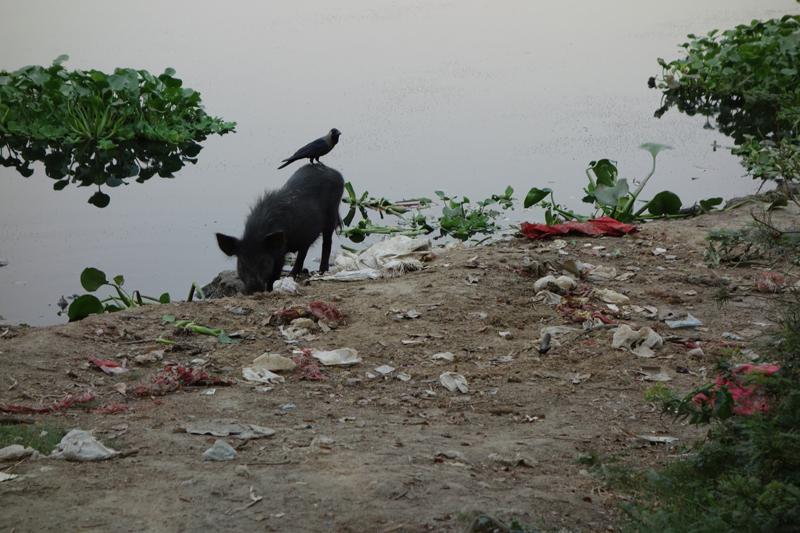 I do not know much about gods; but I think that the river is a strong brown god - sullen, untamed and intractable.
I do not know much about gods; but I think that the river is a strong brown god - sullen, untamed and intractable.
Patient to some degree, at first recognized as a frontier; useful, untrustworthy as a conveyor of commerce; then only a problem confronting the builder of bridges. The problem once solved, the brown god is almost forgotten by the dwellers in cities - ever, however, implacable, keeping his seasons and rages, destroyer, reminder of what men choose to forget. Unhonoured, unpropitiated
by worshippers of the machine. - T. S. Eliot (1888-1965) from Four Quartets
Hindu mythology tells us that river Yamuna is a goddess and the water has the power to wash away sins. However, the 22 kilometers of Yamuna that flows through Delhi is no longer fit for ablutions, divine or otherwise. « The amount of untreated sewage and industrial effluents that are directed towards the river are enough to make it very sick. Today, the state of Yamuna in Delhi is such that the thickness of the waste does not allow it to flow, except in the monsoon months » said Dr. Soni.
4% of the river flows
According to the Central Pollution Control Board (CPCB), only 4% of the Yamuna actually flows through the Capital. Ironically, this stretch is responsible for over 70% of the river’s pollution. The pollution levels of the Yamuna are such that the water is unfit even for bathing. That, however, does not stop slum dwellers from taking a bath in the river. R M Bhardwaj, Senior Scientist, CPCB, explained the limitations of the government while dealing with domestic sewage and industrial effluents disposal. « Water is a state subject. In the capital, we have the most extensive sewage treatment plants (STPs) in place. However, the amount of waste water produced by Delhi does not reach the STPs because of the lack of sewage pipelines », he said.

A Okhla, au sud de Delhi. © Anna Cuxac/Cuej
Delhi in a space crunch
Sanjam Cheema, the Public relations Officer of DJB explained, « Delhi is rapidly expanding in terms of number of people. There is a space crunch and that is why laying extensive sewage disposal pipelines is impossible. » Also, the pipelines already in place do not function properly due to leakage or thickness ofsewage. Mr Bhardwaj accepts the helplessness of the government.
He says, « In the slum clusters inDelhi there are people who run illegal factory units from their own homes. The effluents from these units never reach a Common Effluents Treatment Plant (CETP) and are disposed along with the other domestic waste into open drains that reach the Yamuna ».
Such illegal factory units are difficult to close down because they pop out again like mushroom in any space available and the Delhi police do not have the manpower to invest itself completely in this work.
It is ironical that the Yamuna, if preserved properly, is capable of providing for the entire capital’s water needs but the state, still, has to buy water from Haryana to survive in the summers.
Aditi Chakravarti, Naila Manal